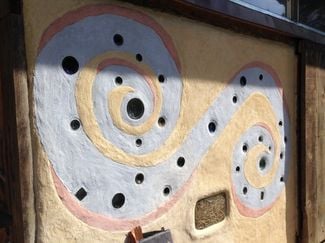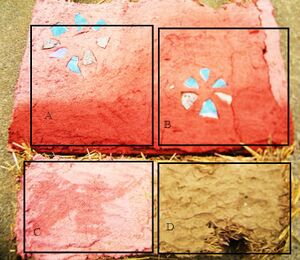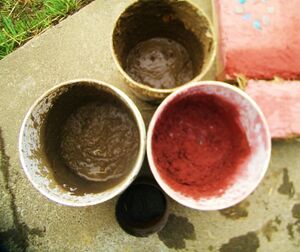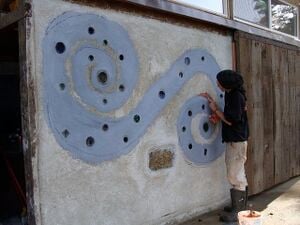This is the Operation and Maintenance (O&M) manual for CCAT greenshed west wall. Please refer to it and keep it up to date with any O&M changes.
Summary[edit | edit source]
The CCAT greenshed west wall is a straw clay slip wall that was constructed using a wooden frame and filled with a straw and clay mix. Twenty-nine 'liters of light' are dispersed along the wall. The wall was finished using a lime plaster. The wall was well built, leaving very little required maintenance.
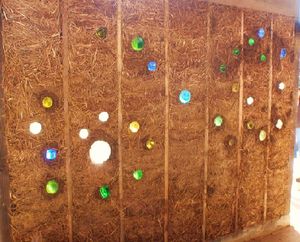
Operation[edit | edit source]
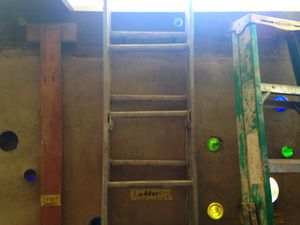
- IT IS NOT RECOMMENDED TO MOUNT OR HANG ANYTHING DIRECTLY FROM THE STRAW CLAY SLIP WALL. Objects should be mounted to the wooden frame instead (Figure 1 shows wooden frame where things can be hung from).
- AVOID STACKING ITEMS AGAINST THE WALL that would prevent the wall from being able to breathe.
Maintenance[edit | edit source]
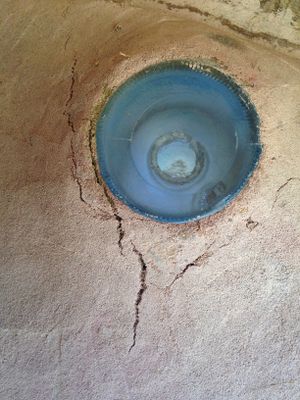
- REPAIRING CRACKS AND FISSURES (See Instructions section below): Overtime, the straw clay slip wall will be subject to deterioration due to weathering. Minor cracks in the plaster do not pose a serious threat to the structural integrity of the wall. However, it may be beneficial to patch minor cracks with a plaster to prevent the inside from accumulating too much moisture, preventing mold growth and insect infiltration. The straw clay slip wall needs to breathe, so a lime plaster is recommended. Refer to this page for detailed steps to recreating a similar plaster.
- PLASTER TOUCH-UP (See Instructions section below): Touching up the plaster is more for aesthetic reasons and not absolutely necessary. It can be helpful if the plaster is beginning to wear away or fade.
Instructions[edit | edit source]
Patch up any cracks or faults first
Prepare a lime wash (lime putty, water, and desired pigment)
Dampen the wall with water as evenly as possible using a spraying mechanism. This step is important in preventing the wall from absorbing water from the lime wash.
Use brushes to apply lime wash and let dry thoroughly
Prepare a lime plaster. Use a similar one to the one listed on the CCAT greenshed west wall page.
Dampen the immediate area with an even spraying mechanism to prevent the wall from too quickly absorbing the water out of the fresh plaster.
Schedule[edit | edit source]
- Monthly
- Check for severe cracks or faults in the wall
- Yearly
- Check for severe cracks or faults in the wall
- Decide whether or not the plaster needs a touch-up
